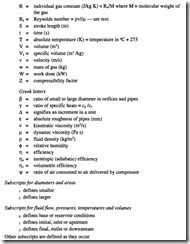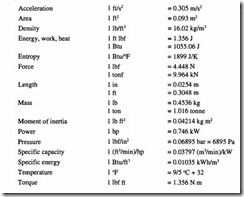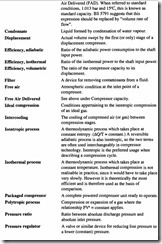NOMENCLATURE AND UNITS
Nomenclature
Unless otherwise specified in the text, the following symbols are used consistently throughout this book:
Note on units
SI units are used consistently throughout this handbook. Certain conventions within the SI structure are used generally throughout the European compressed air industry. These are as follows:
Conversion factors
For the convenience of those readers more familiar with Imperial units, the following conversion factors may be used.
The values quoted are adequate for most engineering purposes, ie accurate to at least 3
Terms and definitions used in the Compressor Industry (see also BS 1571 and BS 5791):
Related posts:
Case studies:Variable speed drives on golf course irrigation pumps
Benefits, drawbacks and operational issues:Operational issues
Pressure and flow:Pressure in fluids
THE COMPRESSOR:COMPRESSOR LUBRICATION
THE COMPRESSOR:MOBILE COMPRESSORS
BASIC PRINCIPLES:GAS LAWS AND THERMODYNAMICS.
COMPRESSORS:Dynamics
HYDRAULIC PUMPS:Wobble Plate Inline Pumps and Bent Axis Pumps.
Hydraulic motors:Basic principles
Signals and standards.
Fundamental Principles:temperature measurement
THE FIRST LAW OF THERMODYNAMICS:ENERGY BALANCE FOR CLOSED SYSTEMS
ENTROPY:ISENTROPIC PROCESSES
ENTROPY:PROPERTY DIAGRAMS INVOLVING ENTROPY
POWER AND REFRIGER A TION CYCLES:THE BRAYTON CYCLE WITH REGENERATION







